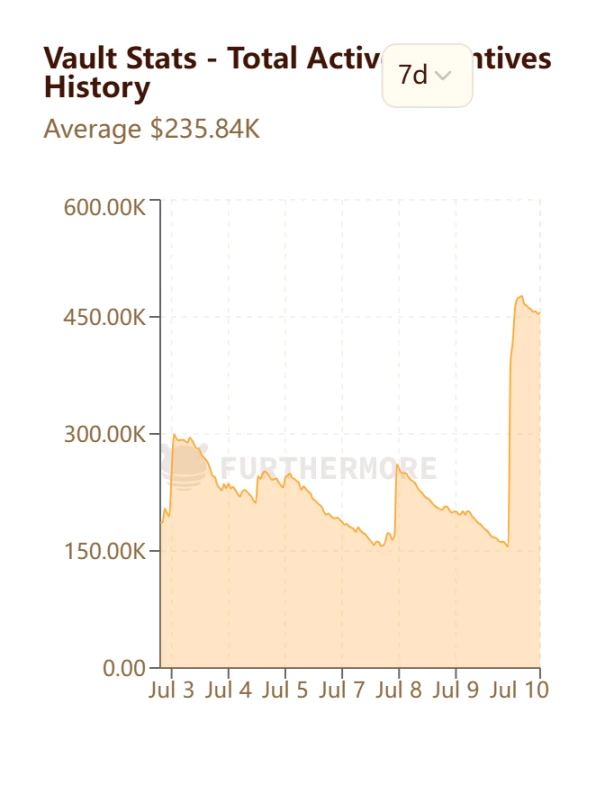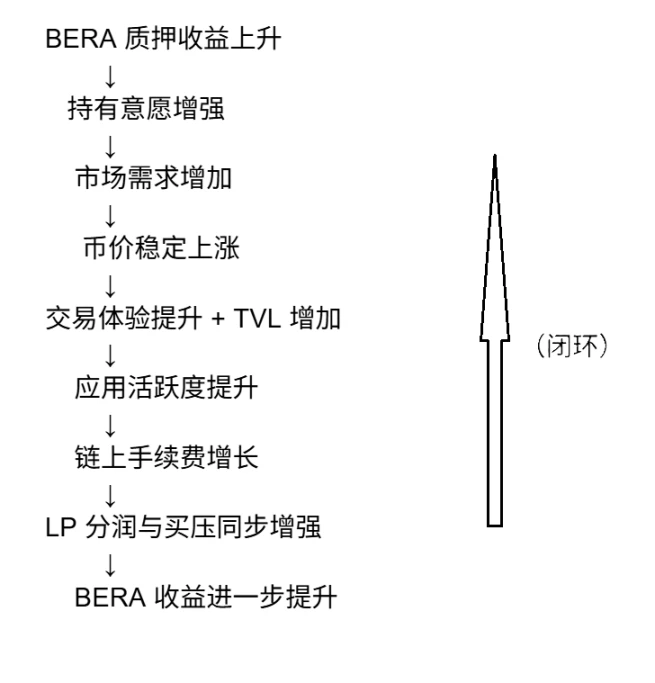1. The core breakthrough of PoL v2: from liquidity incentives to value closed loop
The mainnet asset dilemma of traditional public chains has existed for a long time. Although tokens such as ETH and SOL bear the functions of gas and consensus, it is difficult to directly capture the growth of ecological value. Berachains PoL (Proof of Liquidity) mechanism attempts to solve this problem through chain-level incentive redistribution, and the key iteration of version v2 is to transfer 33% of DApp bribery incentives from BGT pledgers to BERA pledgers. This adjustment may seem subtle, but it is actually a paradigm shift in the mainnet asset value model.
Although PoL v1.0 has successfully leveraged the growth of ecosystem TVL (according to DefiLlama data, Berachain mainnet TVL exceeded $1.2B in 3 months after its launch), the incentive bonus mainly went to BGT and its derivatives. The v2 version establishes a dual channel allocation (67% BGT/33% BERA), which allows main coin holders to obtain protocol layer income for the first time without participating in complex DeFi strategies, essentially completing the upgrade of Gas tokens → income assets.

2. The subtlety of mechanism design
Non-inflationary benefits: v2 does not emit new tokens, but rather restructures existing incentive flows to enable BERA to obtain chain-level cash flow. According to Furthermore data, currently about $50K-$120K bribery incentives are directly injected into the BERA staking pool every week, forming a continuous buying pressure.
BGT niche protection: 67% of the bribery incentives are reserved for BGT stakers, which not only maintains the incentive leverage effect of the project party 1 US dollar → 1.x US dollars, but also avoids triggering a liquidity run on the governance token holders.

Triple positive feedback loop:
More BERA staked → higher chain security
Higher pledge rate → fewer circulating chips
Less circulation → bribery incentives amplify the unit BERA revenue

III. Potential Impact of Market Structure
1. For retail investors: low threshold profit capture
Ordinary users now only need to stake BERA to obtain two types of benefits:
-
Direct benefits: 33% vote-buying incentive allocation (APY is about 9-15%, according to community calculations)
-
Indirect income: dividends from native DEX protocol revenue
Compared to other L1s that require users to provide liquidity or participate in governance, Berachains staking equals income model significantly lowers the threshold for participation.
2. To Builder: A new way to play the main currency economy
Project owners can use BERA’s revenue attributes to design new mechanisms, such as:
-
Automatically convert protocol income into BERA for repurchase
-
Develop BERA-based veToken model
-
Create a derivative agreement with BERA as collateral
(A team has tested distributing 80% of the protocol revenue to BERA stakers)
3. For investors: Reconstruction of valuation model
The current market value/TVL ratio of Berachain is 0.31, which is much lower than new public chains such as Sui (4.44) and Aptos (3.17). As BERA gains chain-level profitability, its valuation logic may transition to discounted cash flow:
Theoretical market value = (chain annualized revenue × price-earnings ratio) + (gas demand × inverse of circulation velocity)

If calculated based on the current $100K weekly vote-buying incentive, the annualized return of $5.2M corresponds to a 20x PE, which implies a valuation of $104M, excluding gas consumption and future revenue growth.
IV. Risks and Challenges
Short-term gaming risk: Some BGT stakers may turn to other ecosystems due to incentive dilution
Mechanism complexity: Ordinary users still need to understand the interaction between PoL/BGT/BERA
Grayscale regulation: The compliance of vote-buying incentives has not been tested
5. Industry enlightenment: L1 competition enters the deep water zone of value distribution
Berachains exploration reveals a trend: the competition focus of the next generation of public chains is shifting from TPS/low-cost Gas to value distribution efficiency. While Arbitrum distributes revenue through DAO and Solana tries to use MEV repurchase to support prices, PoL v2 demonstrates a more native solution – directly injecting ecological value into the main currency through protocol layer design.
If this model can be continuously verified, it may lead to other L1s to follow suit. After all, as the dividends of liquidity mining fade, how the chain can create real demand for itself has become a key proposition that determines the life and death of the project. The answer given by Berachain is: let the main currency become the first beneficiary of the prosperity of the ecosystem.
This article is sourced from the internet: How does PoL v2 reshape $BERA’s value capture path?
According to incomplete statistics from Odaily Planet Daily, from July 7 to July 13, a total of 8 financing events were disclosed in the global blockchain field, a decrease of 46.7% from the previous week (15 events); the total financing scale reached US$280 million, a decrease of 63.2% from US$760 million in the previous week. The highlight of this weeks financing is that Zerohash, a cryptocurrency and stablecoin infrastructure service provider, is raising approximately $100 million at a valuation of nearly $1 billion; in addition, artificial intelligence laboratory Harmonic completed a $100 million Series B financing, becoming the largest single financing case this week. The following are specific financing events (Note: 1. Sort by the amount of money announced; 2. Excludes fund raising and MA events; 3. * indicates a…






